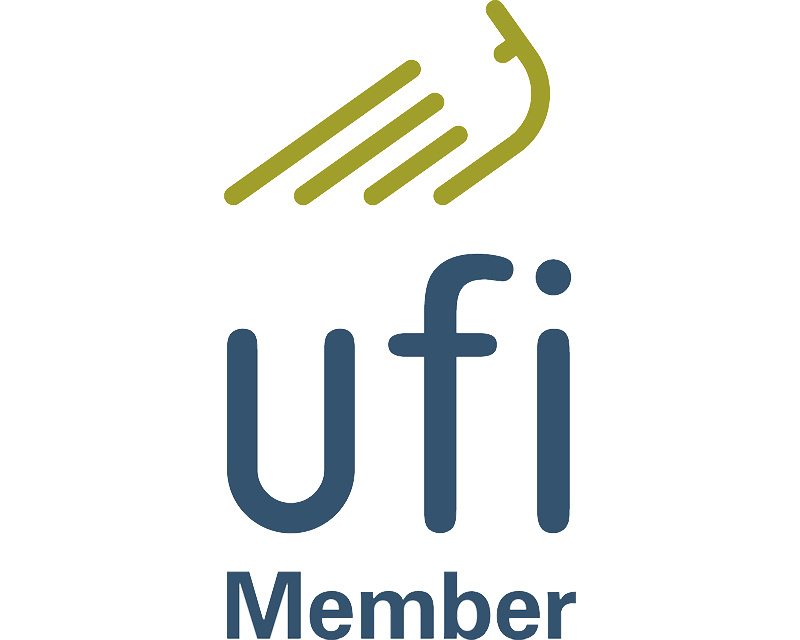- 10 30 AM
CCS Containment
Knowledge Partner : Pathways Alliance
 Exhibition Floor
Exhibition Floor 10:30 AM - 11:15 AM
10:30 AM - 11:15 AM

- 11 30 AM
Assessing Post-Combustion Carbon Capture and if it Should Be Part of Your Company’s Decarbonization Program
Carbon capture, utilization, and storage (CCUS) is progressing throughout North America as a viable decarbonization solution. With years of research and development and several successful implement...
Knowledge Partner : Pathways Alliance
 Exhibition Floor
Exhibition Floor 11:30 AM - 12:15 PM
11:30 AM - 12:15 PM
Assessing Post-Combustion Carbon Capture and if it Should Be Part of Your Company’s Decarbonization Program
 11:30 AM - 12:15 PM
11:30 AM - 12:15 PM Exhibition Floor
Exhibition Floor
Carbon capture, utilization, and storage (CCUS) is progressing throughout North America as a viable decarbonization solution. With years of research and development and several successful implementations, combined with recently approved prices on carbon, the market is positioned for continued growth. This growth has led to the development of Kiewit’s portfolio of numerous CCUS feasibility studies and front-end engineering studies (FEED) and multiple EPC projects across North America with a variety of technologies. But is post-combustion carbon capture the right solution for your company? What technical questions need to be answered? The concentration of CO2, total flow rate, the need for flue gas pre-treatment, location, availability of sequestration, and the availability of utilities amongst other factors will be critical in the decision.
This presentation provides a summary of our learnings in CCUS facility development including an overview of post-combustion carbon capture technologies being considered, key processing decisions that will need to be made, and the key factors that should be reviewed and assessed to evaluate if post-combustion CCUS should be included in your company’s decarbonization plans.

- 12 30 PM
Flipping the Equation of Carbon Capture From Cost to Revenue
Carbon Corp plays on its proprietary C2CNT® process to flip the equation of carbon capture and utilization, leading to carbon capture being a revenue generator, rather than a cost. The C2CNT® uses...
Knowledge Partner : Pathways Alliance
 Exhibition Floor
Exhibition Floor 12:30 PM - 1:15 PM
12:30 PM - 1:15 PM
Flipping the Equation of Carbon Capture From Cost to Revenue
 12:30 PM - 1:15 PM
12:30 PM - 1:15 PM Exhibition Floor
Exhibition Floor
Carbon Corp plays on its proprietary C2CNT® process to flip the equation of carbon capture and utilization, leading to carbon capture being a revenue generator, rather than a cost. The C2CNT® uses a high-temperature, carbon-rich, molten carbonate to split CO2 into graphitic carbon nanomaterials (CNMs) by electrolysis. Carbon Corp currently has 17 allotropes of carbon nanomaterials in its portfolio including materials like 0D (such as carbon nano-onions), 1D (such as carbon nanotubes), and 2D (such as graphene nano-scaffold). These materials have a wide variety of applications carbon fiber, polymer, electronic, medical, transportation, steel, cement, and power sectors. Built from the same fundamental graphene structure as graphite, which has a geologic lifetime, these nanocarbons can permanently bind the transformed CO2 to mitigate global warming. Carbon Corp has its demonstration facility at the Alberta Carbon Capture Technology Centre (ACCTC) where it leverages the flue gas from the natural gas to electricity facility, Shepard Energy Centre. The technology was showcased during the Carbon XPRIZE and was awarded the 2021 X-Factor award for the most valuable product from carbon dioxide. The technology and process are backed by more than 30 publications and over 100 patents and patents pending. Carbon Corp in collaboration with Direct Air Capture LLC has expanded on its abilities of Direct Air Capture (DAC), striping carbon dioxide directly from the atmosphere and converting it into carbon nanomaterials. The consortium of Carbon Corp and Direct Air Capture LLC has been recognized in the ongoing XPRIZE Carbon Removal as a Top 60 participant (of over 1,100).

- 1 30 PM
Moving Forward Together (Policy/Regulatory Update)
Knowledge Partner : Pathways Alliance
 Exhibition Floor
Exhibition Floor 1:30 PM - 2:15 PM
1:30 PM - 2:15 PM
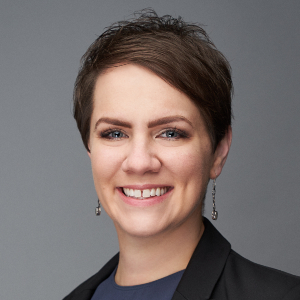
- 2 30 PM
Operational Considerations for Drilling and Testing CCS Wells
Operational Considerations for Drilling and Testing CCS Wells Carbon sequestration wells (appraisal, injector and monitoring) are notably different from most oil and gas exploration and development...
Knowledge Partner : Pathways Alliance
 Exhibition Floor
Exhibition Floor 2:30 PM - 3:15 PM
2:30 PM - 3:15 PM
Operational Considerations for Drilling and Testing CCS Wells
 2:30 PM - 3:15 PM
2:30 PM - 3:15 PM Exhibition Floor
Exhibition Floor
Operational Considerations for Drilling and Testing CCS Wells Carbon sequestration wells (appraisal, injector and monitoring) are notably different from most oil and gas exploration and development wells. Even acid gas disposal wells and EOR CO2 injectors only share some commonalities with wells constructed for permanent dedicated CO2 sequestration. In this talk we will highlight special considerations to keep in mind when planning, estimating, executing or outsourcing the drilling and testing of CCS wells. Considerations will fall into the following 5 categories: Abandonment While most oil & gas wells start their life at their highest pressure and are abandoned after they are depleted to a lower pressure, CO2 injection wells (and in-zone monitor wells) are likely abandoned at the highest pressure in their lifecycle after 30+ years of injection. This fact, combined with the required permanence of CO2 sequestration, warrants discussions on robust abandonments from day one of well planning. Cementing Along with corrosion resistant alloys and permanent plugging and abandoning techniques, annulular cement jobs are critical to well integrity. Strategies and choices around cementing will be discussed. Intermittent Operations Unlike unconventional development plays where multiple rigs will be drilling similar wells for months or years, CCS wells are often of bespoke design and drilled as one-off’s somewhat infrequently. Unfortunately, the first well in a program often comes with a steep learning curve. Unique considerations and strategies for successful intermittent operations will be discussed. Logging and Coring A key purpose for drilling appriasal wells (and early injector wells) is to collect data to support modeling to inform injectivity, capacity, containment and ultimately project feasibility. Considerations for operationally successful data collection will be discussed. Well Testing One of the most critical sources of downhole data is well testing. Although test design lives firmly in the domain of reservoir engineers, practical considerations related to fluid handling and fluid compatability must be considered. Instrumentation Well instrumentation contributes to accurate accounting of CO2 sequestered, monitors that there are no leaks in the wellbore, and provides data for modeling and understanding of the movement of subsurface CO2 over time. There is a balance between maximizing data that can be collected from the well, and minimizing well complexity and risk.

- 3 30 PM
Development of Novel CO2 Capture Systems
Knowledge Partner : Pathways Alliance
 Exhibition Floor
Exhibition Floor 3:30 PM - 4:10 PM
3:30 PM - 4:10 PM
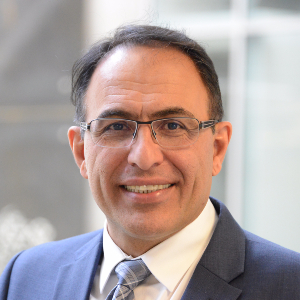
- 4 30 PM
Industry Networking Reception
 4:30 PM - 6:00 PM
4:30 PM - 6:00 PM Exhibition Floor
Exhibition Floor
- 10 30 AM
Tailpipe Emissions Capture
The mining industry is evaluating different technologies and options for decarbonizing their mine haul operation. Some of these options can take a long time to implement and delay the industry in r...
Knowledge Partner : Pathways Alliance
 Exhibition Floor
Exhibition Floor 10:30 AM - 11:15 AM
10:30 AM - 11:15 AM
Tailpipe Emissions Capture
 10:30 AM - 11:15 AM
10:30 AM - 11:15 AM Exhibition Floor
Exhibition Floor
The mining industry is evaluating different technologies and options for decarbonizing their mine haul operation. Some of these options can take a long time to implement and delay the industry in reaching its carbon reduction goals. InnoTech Alberta has developed a transitional solution to assist the industry by adopting a plug-and-play solution for the rapid adoption of carbon reduction technologies.
In this proposed concept, a mining vehicle is equipped with a reusable cartridge as part of the Tailpipe Emissions Capture (TER) procedure to capture carbon dioxide before it enters the atmosphere. The cartridge is capable of removing SOx and NOx as well. The CO2-loaded cartridge will be transported to a central facility to remove the CO2 and make it ready for reuse. The collected CO2 will later be sent into the pipeline for storage or utilization.
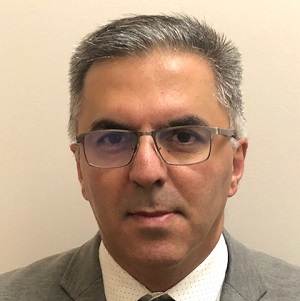
- 11 30 AM
Modularization: The Key to Unlocking the Potential of CCUS
Carbon capture, utilization, and storage (CCUS) is a suite of technologies that can help to mitigate climate change by capturing carbon dioxide (CO2) from large point sources such as power plants a...
Knowledge Partner : Pathways Alliance
 Exhibition Floor
Exhibition Floor 11:30 AM - 12:15 PM
11:30 AM - 12:15 PM
Modularization: The Key to Unlocking the Potential of CCUS
 11:30 AM - 12:15 PM
11:30 AM - 12:15 PM Exhibition Floor
Exhibition Floor
Carbon capture, utilization, and storage (CCUS) is a suite of technologies that can help to mitigate climate change by capturing carbon dioxide (CO2) from large point sources such as power plants and industrial facilities. Modularization is a key enabler of CCUS, as it can help to reduce the cost, complexity, and risk of deploying these technologies.
There are several advantages to modularizing carbon capture systems. First, it can help to reduce the upfront cost of investment, as smaller modules can be deployed more quickly and easily than larger, monolithic systems. Second, modularization can make it easier to scale up or down CCUS systems as needed, which can be important for meeting fluctuating demand for CO2 capture. Third, modular systems are easier to transport and install, which can reduce the time and disruption associated with deploying CCUS technologies.
In addition to these technical advantages, modularization can also help to improve the social acceptability of CCUS. By breaking down large, complex systems into smaller, more manageable components, modularization can make it easier for stakeholders to understand and trust CCUS technologies. This is important, as public acceptance is essential for the widespread deployment of CCUS.
Overall, modularization is a key enabler of carbon capture. By reducing the cost, complexity, and risk of these technologies, modularization can help to make CCUS a more attractive option for mitigating climate change.
Here are some specific examples of how modularization is being used in carbon capture:
• The Petra Nova project in Texas is the world's largest post-combustion carbon capture and storage project. The project uses modularized carbon capture units that can be easily added or removed as needed.
• The Carbon Clean project in the Netherlands is developing a modularized carbon capture system that can be used to capture CO2 from industrial facilities. The system is designed to be scalable and transportable, making it a good option for small and medium-sized businesses.
• The Carbon Capture and Storage Research and Development Centre in the UK is developing a modularized carbon capture system that can be used to capture CO2 from power plants. The system is designed to be energy efficient and cost-effective.
These are just a few examples of how modularization is being used in carbon capture. As the technology continues to develop, modularization is likely to become even more important in the future.
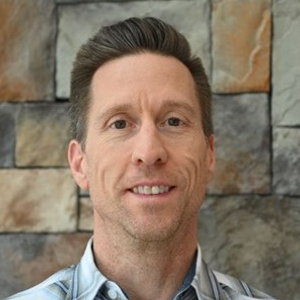
- 12 30 PM
Jackfish 1 Carbon Capture Plant FEED Study
Delta CleanTech Inc. carried out a Front-end Engineering Design (FEED) study for a 1000 metric tonne per day (TPD) Carbon Capture Unit for Jackfish 1 Heavy Oil Operations in Alberta, Canada. The FE...
Knowledge Partner : Pathways Alliance
 Exhibition Floor
Exhibition Floor 12:30 PM - 1:15 PM
12:30 PM - 1:15 PM
Jackfish 1 Carbon Capture Plant FEED Study
 12:30 PM - 1:15 PM
12:30 PM - 1:15 PM Exhibition Floor
Exhibition Floor
Delta CleanTech Inc. carried out a Front-end Engineering Design (FEED) study for a 1000 metric tonne per day (TPD) Carbon Capture Unit for Jackfish 1 Heavy Oil Operations in Alberta, Canada. The FEED Study is crucial for detail engineering and construction to get an accurate estimation of project expenditures. The study was based on CO2 capture from the exhaust of three Once‐Through Steam Generators (OTSG’s) at Jackfish 1 Steam‐Assisted Gravity Drainage (SAGD) thermal in‐situ oilsands production facility near Conklin, Alberta. The captured CO2 can be utilized for Enhanced Oil Recovery (EOR) or sent for CO2 Sequestration. Delta CleanTech’s carbon capture technology is using an aqueous reactive chemical solvent. The plant was designed to be a modular shop-fabricated plant on sections that allow easy fabrication, transportation and installations. The process configuration consists of one absorber and one stripper. The total plant foot-print is estimated to be 8000 m2 (80m × 100m). The study estimated the capital expenditure (CAPEX) within ±15% accuracy excluding downstream CO2 compression, dehydration, transportation, and storage. The estimated CAPEX spread simply over 20 years of production at design rate gives an indicated CAPEX component of the capture cost of about $11.98/tonne of CO2. Using a weighted average cost of capital of 8%, assuming a long-term average plant throughput of 85% of design rate, and assuming a plant availability of 95%, the CAPEX component of carbon capture cost from SAGD facilities will be under $37/tonne. Delta estimates the operating cost of a carbon capture unit to be approximately $30/tonne. The indicated total carbon capture cost at 8% cost of capital is under $70/tonne.
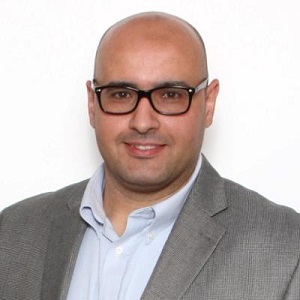
- 1 30 PM
The Importance of Balance of Plant Optimization for a Post Combustion Carbon Capture Unit
The term "Balance of Plant" (BOP) is commonly used to describe the collection of supporting components and auxiliary systems that work in conjunction with a unit, excluding the unit itself. In the...
Knowledge Partner : Pathways Alliance
 Exhibition Floor
Exhibition Floor 1:30 PM - 2:15 PM
1:30 PM - 2:15 PM
The Importance of Balance of Plant Optimization for a Post Combustion Carbon Capture Unit
 1:30 PM - 2:15 PM
1:30 PM - 2:15 PM Exhibition Floor
Exhibition Floor
The term "Balance of Plant" (BOP) is commonly used to describe the collection of supporting components and auxiliary systems that work in conjunction with a unit, excluding the unit itself. In the context of a post combustion carbon capture unit, BOP typically encompasses various units, including flue gas collection and blowers, steam production for amine regeneration, CO2 compressor and dehydration unit, and water treatment. The cost of BOP can vary depending on factors such as the chosen carbon capture technology, the availability of utilities, choice of cooling medium, and numerous other considerations.
In a typical carbon capture facility, it is estimated that approximately 40% of the total capital expenditure (CAPEX) will be allocated towards the Balance of Plant (BOP). This significant portion of the CAPEX is attributed to the various units and infrastructure required for the proper functioning of the carbon capture process. Ensuring an efficient and reliable BOP is vital for the overall performance and success of the carbon capture facility.
Proper cost breakdown analysis and optimization of the BOP are essential to ensure efficient operations and cost-effectiveness in carbon capture projects. Approximately 50% of the total cost of the Balance of Plant (BOP) is attributed to compression and dehydration, while steam production typically accounts for 25% of the cost. Water treatment and flue gas collection together make up around 25% of the overall cost.
Studies and optimization efforts aimed at minimizing the cost of the Balance of Plant (BOP) in a carbon capture project hold significant importance. These endeavors help identify cost-saving opportunities and enhance the overall cost-effectiveness of the project. Several studies and optimization techniques can be employed to achieve this goal. These may include comprehensive techno-economic analyses to evaluate the cost implications of different BOP configurations, equipment selections, and design alternatives. Studies can also focus on optimizing the layout and arrangement of BOP components to reduce construction costs, minimize material requirements, and enhance operational efficiency. Furthermore, exploring alternative materials and technologies, conducting lifecycle cost analyses, and leveraging advanced control and automation systems can contribute to cost optimization efforts. Additionally, assessments of site-specific factors, such as available utilities, local regulations, and potential synergies with existing infrastructure, can inform optimization strategies. Ultimately, the findings from these studies and optimization initiatives provide valuable insights and guidance for decision-making processes, leading to more economically viable and sustainable carbon capture projects.
Within this presentation, we dive into various cost and energy saving opportunities and potential savings that can be achieved within the Balance of Plant (BOP):
• Ducting material and routing. Challenge and solutions in collection of flue gas from multiple sources.
• Flue gas blower location and control.
• Steam production and condensate recycling.
• Combined heat and power generation
• Cooling method evaluation (Air, Glycol, Cooling Water, or a combination)
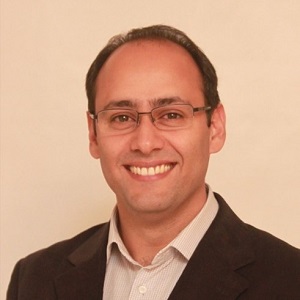
- 2 30 PM
Subsurface Uncertainty in CCS Investment Decisions
Injection flow streams from dynamic simulation models presented in regulatory permit applications to date generally focus on a best technical estimate case. This makes sense, given the focus of the...
Knowledge Partner : Pathways Alliance
 Exhibition Floor
Exhibition Floor 2:30 PM - 3:15 PM
2:30 PM - 3:15 PM
Subsurface Uncertainty in CCS Investment Decisions
 2:30 PM - 3:15 PM
2:30 PM - 3:15 PM Exhibition Floor
Exhibition Floor
Injection flow streams from dynamic simulation models presented in regulatory permit applications to date generally focus on a best technical estimate case. This makes sense, given the focus of the regulator is typically to protect health and safety of the public and ensure that injected CO2 stays confined to the target zone. However, reliance on an injection flowstream from a single model built with a regulatory perspective (without a history match) as the basis of an investment decision may leave financial partners vulnerable to low-side outcomes (as well as lacking an understanding of upside potential). Permit approval does not necessarily guarantee project will achieve nameplate volumes over the short or long terms – operators can over-permit and under-inject easier than the reverse. An understanding of the subsurface uncertainty during the early stages of project maturation is key to successful investment decisions. This presentation will cover: - Examples of uncertainty discussion in permit applications. - Overview of key subsurface uncertainties in CCS and their impact on modeling results. These include property inputs such as relative permeability, porosity, and poro-perm trends, as well as model construction choices such as property distribution methods. - Case study comparing results of CCS plume models with different property realizations (layer cake, stochastic, and conceptual model distributions) - Conclusion touching on the Storage Resource Management System, the success of its analog (the PRMS) in oil & gas financing, and its future potential for CCS financing.




